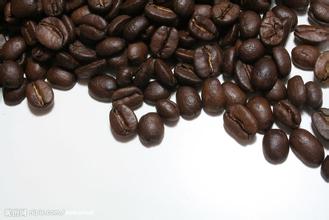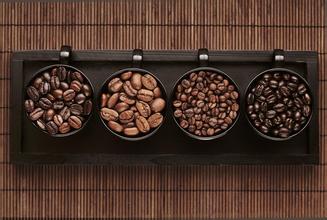An introduction to the way to describe the flavor of Kenyan Berman Manor coffee with acidity.
Kenya is bordered to the north by Ethiopia, the origin of Arabica coffee trees, but it was not until the beginning of the 20th century that coffee cultivation began. In the 19th century, missionaries introduced Arabica trees from the leaves, but did not plant them in large quantities. It was not until 1893 that coffee was cultivated on a large scale because of the introduction of Brazil's ancient bourbon seeds. That is to say, Kenyan coffee is of Brazilian origin. Due to the differences in water, climate and handling, the taste of Kenyan beans is very different from that of Brazilian beans. Brazilian coffee is planted at a low altitude, with soft texture and no obvious sour taste. In contrast, Kenyan coffee trees are mainly concentrated on the slopes near Mount Kenya, about 4 to 6500 feet above sea level, which is suitable for coffee beans to develop their flavor, because the mountain temperature is lower and the growth is slower, and the aromatic components of coffee beans are fully developed. the acidity of the fruit is more obvious and the texture is harder. In addition, Kenya was an early British colony, and the British had established a set of perfect cultivation and quality control system. After the independence of Kenya, the coffee industry built on the existing foundation.
Kenyan AA coffee is one of the rare good coffees. It is famous for its rich aroma and balanced acidity and is loved by many foodies. It tastes perfect and balanced, and has an excellent and strong flavor, fresh and not overbearing, and is a complete but not heavy taste experience. Kenya AA coffee is the most popular coffee in Europe. After a clear sip, you will feel that it strikes your whole tongue at the same time. The flavor is both fresh and not domineering, and it is definitely a complete but not heavy taste experience.
The vast majority of Kenyan coffee trees grow in the mountains north and west of the capital Nairobi, with two main producing areas, one extending southward from the southern slope of Mount Kirinaga, Kenya's highest peak, to near the capital Nairobi, which is close to the equator and is the largest coffee-producing area in Kenya, in addition to a relatively small producing area on the eastern slope of the Elgon Mountains. Kenya grows high-quality Arabica coffee beans, which absorb almost the essence of the whole coffee tree, with a slightly sour, thick aroma, bright, complex, fruity flavor and grapefruit aroma, suitable for hot or ice drinks; it is for this reason that Europeans love Kenyan coffee, especially in the UK and even surpassing Costa Rican coffee as the most popular coffee.
High-quality Kenyan coffee is aromatic, full-bodied and fruity, with a rich and perfect taste. Kenyan coffee has a wonderful fruit flavor, tastes like BlackBerry and grapefruit, and is a favorite of many coffee gluttons. This coffee has an excellent medium purity, crisp and refreshing taste. It has a fresh flavor and is most suitable for drinking iced coffee in summer. When tasting this coffee, if it is paired with sour fruits such as grapefruit, it will certainly give me the best coffee experience. "not much like coffee, but rather like fruit tea" is the common feeling of many people about this kind of lightly roasted Kenyan coffee. Kenyan coffee mostly grows at an altitude of 1500Murray 2100 meters, and is harvested twice a year. To ensure that only ripe berries are picked, people must tour the forest about seven times. Kenyan coffee is grown by small farmers. After they harvest the coffee, they first send the fresh coffee beans to the cooperative cleaning station. The washing station sends the dried coffee to the cooperative in the form of "parchment coffee beans" (that is, coffee beans covered with endocarp) to the cooperative ("parchment coffee beans" is the last state of coffee beans before peeling). All the coffee is collected together, and the growers charge the average price according to their actual quality. This method of buying and selling is generally working well and is fair to both growers and consumers. internationally, the increase in the number of Kenyan coffee is obvious, with exports of 800000 bags in 1969-1970 and 2 million bags in 1985-1986. Now the yield is stable at 1.6 million bags, with an average yield of about 650kg per hectare. Even before coffee prices skyrocketed in recent years, the average price of coffee in Kenya had been rising. Prices in 1993-1994 were 50% higher than they were 12 months ago. The rise in prices is mainly the result of increased demand.
Some buyers, especially Japanese businessmen, have expressed dissatisfaction with the Kenyan coffee industry system. Some businessmen say that the quality of coffee in the country has declined, and point out that buying directly from farmers may be a way to improve the quality. But in any case, Kenya's detailed rules and regulations and sound procedures are a model for all coffee producing countries to learn from.

Important Notice :
前街咖啡 FrontStreet Coffee has moved to new addredd:
FrontStreet Coffee Address: 315,Donghua East Road,GuangZhou
Tel:020 38364473
- Prev

Guatemala Inchter Estate Coffee Flavor Description Processing Method Taste Introduction
There is a big temperature difference between hot and cold in this area. In cold season, the temperature will drop to 0 degrees. Rainfall is also low, which is an unfavorable environment for coffee trees. But the geothermal heat of Agua produces the highest quality coffee. In the peak harvest season, we select the harvesters for La Tacita from more than 600 harvesters, train them in responsibility and self-awareness, and train them in making excellent coffee.
- Next

Coffee flavor description of slightly sour Santa Barara Manor in Honduras
Honduras has diplomatic relations with Taiwan, and Taiwan has an embassy in Hong. In May 2000, Vice President Arevalo led a special mission to Taiwan to attend Chen Shui-bian's presidential inauguration ceremony; in September, Taiwan Vice President Annette Lu visited Hong. In March 2001, Taiwan Defense Minister Wu Shih-wen visited Hong; in June, Chen Shui-bian visited Hong. In 1993, Hong Joint signed in support of Taiwan's proposal to return to the United Nations; in 1994, it was not co-signed.
Related
- Does Rose Summer choose Blue, Green or Red? Detailed explanation of Rose Summer Coffee plots and Classification in Panamanian Jade Manor
- What is the difference between the origin, producing area, processing plant, cooperative and manor of coffee beans?
- How fine does the espresso powder fit? how to grind the espresso?
- Sca coffee roasting degree color card coffee roasting degree 8 roasting color values what do you mean?
- The practice of lattes: how to make lattes at home
- Introduction to Indonesian Fine Coffee beans-- Java Coffee producing area of Indonesian Arabica Coffee
- How much will the flavor of light and medium roasted rose summer be expressed? What baking level is rose summer suitable for?
- Introduction to the characteristics of washing, sun-drying or wet-planing coffee commonly used in Mantenin, Indonesia
- Price characteristics of Arabica Coffee Bean Starbucks introduction to Manning Coffee Bean Taste producing area Variety Manor
- What is the authentic Yega flavor? What are the flavor characteristics of the really excellent Yejasuffi coffee beans?

